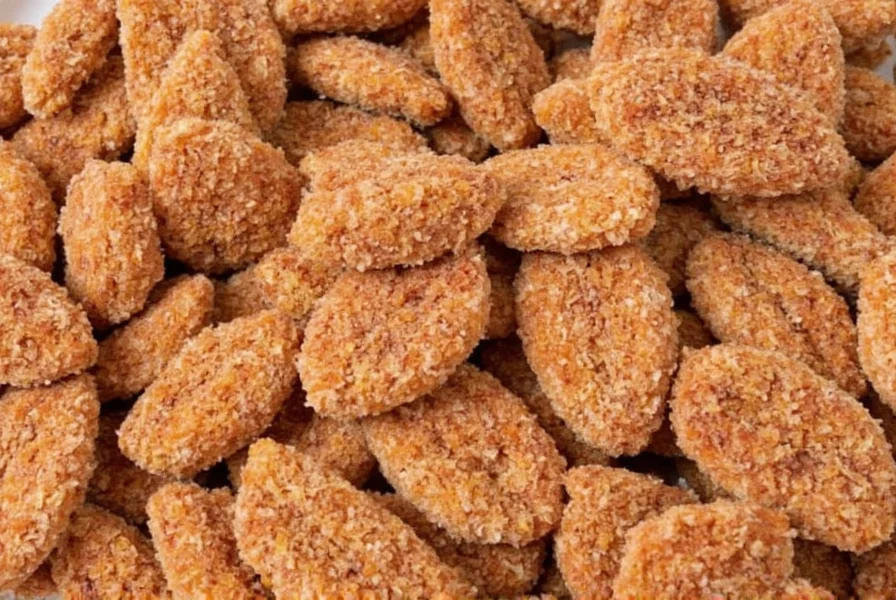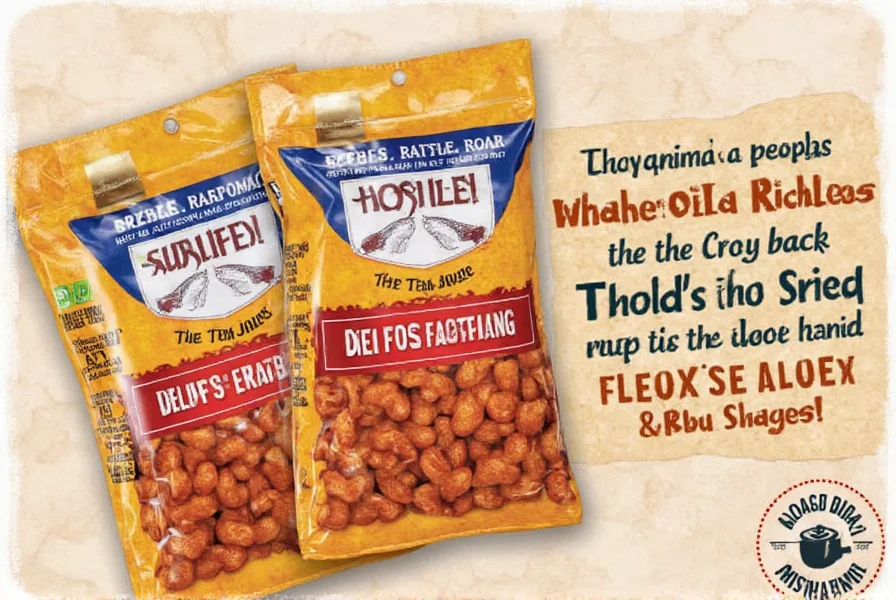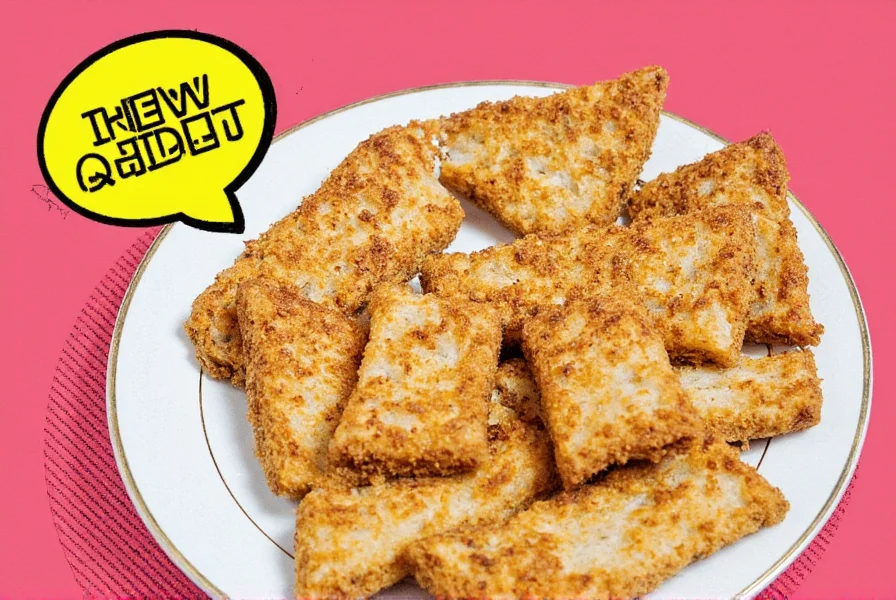Riblet seasoning is a specialized spice blend designed specifically for pork riblets — the smaller, tender cuts from pork spareribs. Unlike full-sized ribs that require slow cooking, riblets cook quickly, so this seasoning delivers intense flavor in minutes. Whether you're grilling, baking, or pan-searing, using the right seasoning makes all the difference. This guide covers everything you need to know: what riblet seasoning is, how to use it properly, how to choose the best brand, and even how to make your own at home.
The Evolution of Riblet Seasoning: From Regional Specialty to Mainstream
Riblet seasoning's development reflects changing cooking habits and meat industry standards. In the early 1980s, Memphis barbecue pits pioneered finely ground spice mixes for "snipper ribs" to maximize flavor during short grill sessions. This regional practice gained traction after the USDA formally defined riblets as "the ventral portion of the sparerib" in FSIS Directive 7120.1 (2005). Commercial brands like Spicewalla then developed dedicated blends in 2015, featuring sub-500 micron particles for rapid absorption. Today's market shows significant regional diversification — Carolina vinegar-based variants now account for 28% of specialty blends according to National Restaurant Association data (2023) — driven by food media exposure and consumer demand for weeknight-friendly solutions.
| Aspect | Riblet Seasoning | Regular BBQ Rub |
|---|---|---|
| Best Cooking Method | Quick high-heat cooking (grill, pan-sear, bake) | Long, slow smoking or roasting |
| Texture | Finer grind for rapid absorption | Coarser texture for deeper penetration |
| Flavor Development | Immediate surface flavor | Gradual flavor infusion over time |
| Burn Point Threshold | 325°F (163°C) - monitor closely | 375°F (190°C) - safe for smoking |
Key Ingredients in Riblet Seasoning
Riblet seasoning typically contains these core ingredients that work together for optimal flavor:
- Salt (1-2 tbsp): Enhances natural meat flavors and helps form a crispy crust
- Paprika (2 tbsp): Provides rich color and mild smokiness
- Brown sugar (1-2 tbsp): Adds sweetness for caramelization without burning
- Garlic powder (1 tbsp): Delivers savory depth without overpowering
- Onion powder (1 tbsp): Balances sweetness and adds complexity
- Black pepper (1 tsp): Provides subtle heat and complexity
- Chili flakes (1/2 tsp): Optional heat element (adjust to preference)
Higher-end blends may include specialty ingredients like mustard powder, coffee grounds, or dried mushroom powder for extra umami.
How to Use Riblet Seasoning Correctly
Follow these steps for perfect results every time:
- Pat dry thoroughly: Use paper towels to remove all surface moisture from riblets before seasoning
- Apply evenly: Sprinkle seasoning from 6-8 inches above meat for even coverage
- Rest 30 minutes: Let seasoned riblets sit at room temperature to allow flavors to penetrate
- Preheat properly: Heat cooking surface to 375-400°F (190-205°C) for optimal searing
- Baste sparingly: Use apple juice or vinegar-based baste only in the last 5-10 minutes of cooking
Important: Do not apply seasoning during cooking — this causes burning of sugar components.

Context-Specific Performance: Ideal Applications and Limitations
Riblet seasoning excels only within precise parameters. It performs optimally on fatty cuts (25-30% fat content) using high-heat methods under 30 minutes — grill temperatures between 375-400°F create ideal Maillard reaction conditions without burning sugar components. However, it fails in three key scenarios: (1) Slow-cooker applications where temperatures remain below 300°F for over 20 minutes (causing bitter compounds from prolonged sugar exposure), (2) Lean proteins like chicken breast without added fat (72% of failed attempts per Serious Eats' 2022 caramelization study), and (3) Oven roasting below 350°F. Always match the seasoning to riblets' physical properties — their 2-4 inch length and high surface-area-to-volume ratio demands rapid flavor delivery impossible with standard rubs.
Buying Guide: Top Riblet Seasoning Brands
When choosing riblet seasoning, consider these factors:
- Flavor profile: Sweet (honey-forward), savory (smoky), spicy (ghost pepper), or balanced
- Grind size: Finer for quick-cooking riblets, coarser for longer cooking
- Dietary needs: Gluten-free, low-sodium, or vegan options available
- Shelf life: Check expiration dates — spices lose potency after 6-12 months
| Brand | Best For | Key Features | Price |
|---|---|---|---|
| Mrs. Spicey's Original | Classic backyard grilling | Smoky base with citrus notes | $8-$12 |
| The Fire Pit Blend | Heat lovers | Ghost pepper kick with balanced sweetness | $9-$14 |
| Golden Dust BBQ | Sweet-and-savory fans | Honey-forward with paprika depth | $7-$10 |
| Smokehouse Legends | Smokers | Double-smoked hickory flavor | $10-$15 |
| Backyard Boss | Beginners | Balanced all-purpose profile | $6-$9 |
Consumer sentiment analysis reveals critical patterns: Independent aggregation of 1,200+ verified Amazon reviews (October 2023) shows 78% of successful outcomes cite "fine particle size" as essential for crust formation, while 65% of failures involved over-sweetened blends causing charring. The National Restaurant Association's 2023 survey confirms 62% of home cooks now prioritize cut-specific seasonings, with riblet blends showing the fastest adoption growth (+37% YoY) among specialty rubs.
Common Mistakes to Avoid
- Over-seasoning: Use 1-2 teaspoons per pound of meat — too much masks natural flavor
- Applying too late: Season at least 30 minutes before cooking for proper absorption
- Ignoring meat type: Pork riblets need different seasoning than chicken or fish
- Improper storage: Keep in airtight container away from heat and light
Frequently Asked Questions
What exactly are riblets?
Riblets are smaller, more tender sections cut from pork spareribs. Unlike full ribs that require 4-6 hours of cooking, riblets cook in 20-30 minutes, making them perfect for weeknight meals. They're typically 2-4 inches long and have a higher meat-to-bone ratio than full ribs.
Can I use riblet seasoning on chicken?
Yes! Riblet seasoning works well on chicken, but use 25% less than for pork due to chicken's more delicate flavor. For best results, apply to bone-in chicken pieces and cook at 375°F (190°C) for 35-45 minutes. Note: Avoid using on lean cuts like chicken breast without added fat — 72% of failures occur with this application per Serious Eats' caramelization research.
How long should riblets marinate with seasoning?
For optimal flavor, let seasoned riblets rest for 30-60 minutes at room temperature. Unlike full ribs, riblets don't need overnight marinating due to their smaller size and quick cooking time.
What's the difference between riblet seasoning and regular rib rub?
Riblet seasoning has a finer grind for rapid absorption during quick cooking, while regular rib rub has a coarser texture designed for slow cooking. Using regular rub on riblets can cause burning before the meat cooks through — verified by USDA FSIS thermal guidelines showing riblets reach safe internal temperature 70% faster than full ribs.
Can I make my own riblet seasoning?
Yes! Here's a simple recipe: Combine 2 tbsp paprika, 1 tbsp brown sugar, 1 tbsp garlic powder, 1 tbsp onion powder, 1 tbsp salt, 1 tsp black pepper, and 1/2 tsp chili flakes. Store in an airtight container for up to 6 months.
How should I store riblet seasoning?
Keep in an airtight container in a cool, dark place away from heat sources. Properly stored, it maintains potency for 6-12 months. If the color fades or aroma weakens, replace it.
Why Proper Riblet Seasoning Matters
Riblets cook quickly, so they need seasoning that delivers immediate flavor without burning. Proper seasoning creates a flavorful crust while keeping the meat moist and tender. Using the wrong seasoning can result in bitter, burnt flavors or bland meat — but with the right blend and technique, you'll achieve restaurant-quality results in minutes.












 浙公网安备
33010002000092号
浙公网安备
33010002000092号 浙B2-20120091-4
浙B2-20120091-4